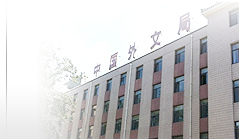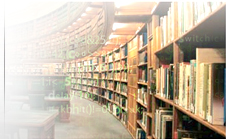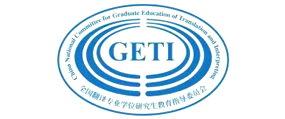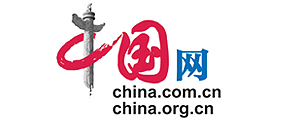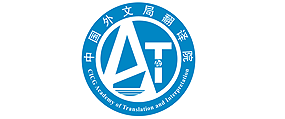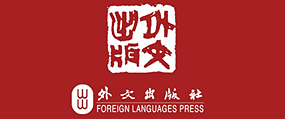目录
理论研究 /
05 翻译伦理研究的反思与重构刍议 吴术驰
15 当代翻译研究的机体主义建构:翻译生命观的构想 罗迪江
25 数字人文视域下名著重译多维评价模型构建 刘泽权
译史纵横 /
34 早期佛典译论文质“厥中论”范式的哲学疏解 张宏雨 刘华文
42 如何为翻译正辞——晚清西学术语译介的道德情感化现象探究 张景华
译介研究 /
49 新时期汉学家对英译中国小说读者的范畴化和重新定位 谭业升
57 中国科幻小说英译发展述评:2000-2020年 高茜 王晓辉
翻译教学·翻译专业课程思政教育校长论坛 /
65 发挥翻译专业特色,谋划翻译课程思政——翻译本硕专业课程思政的北外实践 贾文键
70 论课程思政教育的三组关系 张宝钧
73 翻译专业课程思政的认识理念、实践路径与发展展望 秦和
77 以课程思政引领翻译专业内涵建设与创新发展 查明建
81 民办高校翻译专业的课程思政教育创新 丁晶
译家研究 /
85 郑克鲁的翻译美学——以序跋为中心 张驭茜
书刊评介 /
92 传统译论史料汇编与翻译学学科发展——从《中国传统译论文献汇编》说起 赵巍
学术访谈 /
98 从语言哲学角度观照“翻译”——与刘宓庆教授谈“究竟何谓‘翻译'” 张举栋
行业研究 /
105 口译行业新动态:远程会议口译主流平台及其技术 王小曼 王斌华
翻译技术 /
113 基于词汇计量特征的翻译质量评价研究 王金铨 于香 吴万能
学术视点 /
121 从《民法典》英译看法律翻译质量管控体系建构 张法连
翻译评论 /
131 游刃在“俗”“雅”“趣”中——评朱振武译《天使与魔鬼》 朱伟芳
学术争鸣 /
140 从副文本的角度分析彦琮《辩正论》的翻译问题 李汉平
实践探索 /
147 汉语篇章英译的“时空同态”建构机制研究 钟书能 侯雅璐
158 文学翻译的忠实:以《荷塘月色》七译本为例 陈顺意
166 “人才”及其相关词语英译辨析 陈胜 田传茂
自学之友 /
173 Come High Water(Aldo Leopold) 曹明伦 译
175 如何让译成之文适如其所译——利奥波德《小河涨水》译后杂记 曹明伦
180 航船中的文明(朱自清) 蔡力坚 译
183 把适当的词放在适当的地方 蔡力坚
词语选译 /
187 习近平总书记在庆祝中国共产党成立100周年大会上的重要讲话摘译
191 英文摘要 /
中文摘要
翻译伦理研究的反思与重构刍议
吴术驰 湖北大学
摘要:翻译伦理研究从20世纪80年代萌芽,发展至今虽从未间断,但也未成为翻译研究的增长点。究其原因,存在概念不清晰,主题不明确,理论不完善等问题。本文首先选取翻译伦理研究中的代表性成果展开反思,重点挖掘成果背后的思想渊源、研究机制和存在的问题,然后基于西方伦理学的研究发展史,尝试界定翻译伦理研究的基本概念,并结合中国的历史文化语境和现实问题,描述了“纯翻译伦理研究”和“应用翻译伦理研究”两个领域及其关系,倡导将翻译伦理研究作为翻译学的一门分支学科加大建设力度。翻译伦理研究的反思与重构刍议
吴术驰 湖北大学
关键词:纯翻译伦理研究;应用翻译伦理研究;伦理学;翻译研究
当代翻译研究的机体主义建构:翻译生命观的构想
罗迪江 郑州大学/广西科技大学
摘要:翻译研究的机体主义建构方式是近几十年来或隐或显地渗透翻译学领域但并没有明说的一个趋向。目前践行机体主义建构有四条路径:来世生命说、生态翻译学、大易翻译学与翻译生成观。它们均具有机体主义的哲学特质,并与西方翻译研究的实体主义建构具有本质区别。机体主义建构引发了包括翻译概念的重新定位、阐释基底从文本转向文本生命、认识论从实体主义转向机体主义等观念嬗变,表明翻译就是一种文本生命在异域中表征、孕育、延续与创造的“生生”过程,从而建构了一个以“翻译即生命表征、翻译即生命孕育、翻译即生命延续、翻译即生命创造”为思想构架的翻译生命观。罗迪江 郑州大学/广西科技大学
关键词:机体主义建构;文本生命;认识论;翻译生命观
数字人文视域下名著重译多维评价模型构建
刘泽权 河南大学
摘要:本文通过对名著重译概念的重新界定、对其本质和评价方法的梳理、审视,从数字人文视角出发,设计并论证了名著重译等级评价模型及相关变量,并以《老人与海》与《红楼梦》“香菱学诗”三首诗的原文及其多个译本进行了验证考察。该评价模型体现了远读和近读的即时切换,打通了质性和量性评价的路径,期望能为名著重译或文学翻译及译本身份构建评价提供借鉴。刘泽权 河南大学
关键词:数字人文;名著重译;评价模型;多维考察
早期佛典译论文质“厥中论”范式的哲学疏解
张宏雨 刘华文 上海交通大学
张宏雨 刘华文 上海交通大学
摘要:文质“厥中论”于早期佛译“文质之争”中所产生,是中国古代翻译思想中的重要理论之一。它取法于儒家的文质人格论,但又有创新发展:不仅仅停留于文质理解的策略层面,还从“经文义理”与“译文语体”间的关系来看待文质矛盾,在文与质间寻求平衡,本文称之为“翻译叙事语篇平衡论”。其也表现出独有的文化特质:翻译的“信言”与“美言”互为有体的传统辩证性、“折中观”均衡意识下的中和思维意识以及从传统文论先觉中汲取营养的学习性。厥中论的理论格局不止于文与质间的均衡,还有翻译的内外因素间的均衡,这一双重意识,较之于之前佛译思想,明显是一种突破与超越,也是对早期传统文论观念的一种进步。
关键词:佛典译论;文与质;“厥中论”;文化特质
如何为翻译正辞——晚清西学术语译介的道德情感化现象探究
张景华 湖南科技大学
张景华 湖南科技大学
摘要:晚清时期中国知识界对西学术语的译介不仅呈现出显著的道德情感化特征,而且对通过术语译介引进的新学语也形成截然对立的道德立场。西学术语译介因此一度被上升到文化安全的高度,促使清政府通过国家机构规范译名以加强国家治理。从先秦名学来看,这种道德情感化现象的实质是术语翻译的正辞问题,对正辞的研究说明术语翻译对维护文化安全、国家治理和西学中国化有极其重要的作用。
关键词:晚清;西学术语译介;道德情感化;先秦名学;正辞
新时期汉学家对英译中国小说读者的范畴化和重新定位
谭业升 上海外国语大学
摘要:本文从范畴化理论和斯戴宾(Stebbins)的阅读理论出发,对新时期汉学家有关英译中国小说读者范畴的观念和重新定位进行评述和理论化概括,进一步阐释和明确了英译中国小说读者范畴的构成、特征和分布形态。文章提出,对新时期的翻译读者进行定位,应充分认识新时期英译中国小说读者范畴的异质性、历史性和变动性等特征,明确中国文学国际声誉的实质,关注读者和出版者的双向认知关系,以及分众传播的趋势。在进行读者原型范畴化时,应避免认知定型的局限。开展新时期翻译读者的范畴化研究,对中国文化和文学“走出去”具有重要理论和实践意义。谭业升 上海外国语大学
关键词:汉学家译者;中国小说翻译;英语国家读者;范畴化;重新定位
中国科幻小说英译发展述评:2000-2020年
高茜 北京语言大学 | 王晓辉 中国互联网新闻中心
高茜 北京语言大学 | 王晓辉 中国互联网新闻中心
摘要:21世纪以来,中国科幻小说出现英译热潮,特别是2015年起,中国科作品以前所未有的速度和规模译介到英语世界,成为中国文学“走出去”的一张新名片。本文通过数据调查与统计的方法,系统梳理了2000-2020年中国科幻小说在英语世界的译介情况,根据不同时期译著出版的特点将中国科幻文学英译划分为三个阶段:零星出现期(2000-2010年),初步探索期(2011-2014年),稳定发展期(2015-2020年)。在此基础上,分析译介热潮背后的影响因素,为后续中国科幻小说的海外传播提供一些启示。
关键词:中国科幻小说;英译;出版;海外传播
郑克鲁的翻译美学——以序跋为中心
张驭茜 苏州大学 / 上海师范大学
张驭茜 苏州大学 / 上海师范大学
摘要:作为我国具有重要影响力的翻译家、文论家及文学史家,郑克鲁先生凭借其系统的史学研究、丰富的翻译经验和深入的理论分析,提出了一系列与实践紧密关联的理论创见,为我国的跨文化交流做出了突出贡献。郑克鲁继承并发扬我国文学批评传统,重视序跋的书写,将序跋视为深入的文学研究。借助序跋,郑克鲁阐发了极具前瞻性的翻译审美观,深入评析翻译对象选择的重要性,阐明作品重译的迫切性,论证翻译对研究的深层影响。
关键词:郑克鲁;翻译美学;序跋
传统译论史料汇编与翻译学学科发展——从《中国传统译论文献汇编》说起
赵巍 山东大学(威海)
摘要:史料汇编为翻译史的撰写提供了基本的经验事实基础,具有重要的资料价值,是翻译史研究的基础性工作,也是翻译批评和翻译理论推进的前提。在中国翻译学科的发展历程中,中国传统译论史料汇编,特别是通史性传统译论汇编,为系统化和专门化的中国翻译史和中国翻译理论研究奠定了集中全面的资料基础。此外,它在收录内容、立目原则、编排方式等方面表达了对于古今、中西关系的认识和语境化的翻译观,跟中国翻译学发展基本同步,具有理论构建的意义。赵巍 山东大学(威海)
关键词:中国传统译论;史料汇编;翻译学科
从语言哲学角度观照“翻译”——与刘宓庆教授谈“究竟何谓‘翻译'”
张举栋 华东理工大学
张举栋 华东理工大学
摘要:“究竟何谓‘翻译'?何谓‘中国翻译'?何谓‘中国翻译学'?”这是中国翻译研究界须要重点讨论并予以澄清的问题,否则某些方面的理论研究可能因此而坠入误区,还有可能就翻译的一些基本问题各执一词,争论不休,甚至导致误解。针对这些基本问题,有必要从语言哲学的高度予以观照,为此,作者访谈了著名翻译理论家刘宓庆先生,刘先生重点从语言哲学的视角对这些问题进行了详细解读,希望能对国内的翻译理论研究有更深刻的启发。
关键词:翻译;语言哲学
口译行业新动态:远程会议口译主流平台及其技术
王小曼 王斌华 英国利兹大学
摘要:在新冠疫情全球蔓延的背景下,远程会议口译成为国际会议口译的新常态。本文对远程会议口译技术的发展历史进行回顾,对目前国际范围内的远程会议同传主流平台进行检视,对各个平台的主要功能、易用性、可扩展性及各自特点与不足之处进行分析,并总结远程会议同传对译员端的设备和技术要求,旨在帮助业界把握口译行业的新动态,并为远程会议口译使用提供指引。王小曼 王斌华 英国利兹大学
关键词:远程会议口译(RSI);技术发展回顾;主流平台检视;设备和技术要求
基于词汇计量特征的翻译质量评价研究
王金铨 于香 扬州大学 | 吴万能 扬州大学/盐城师范学院
王金铨 于香 扬州大学 | 吴万能 扬州大学/盐城师范学院
摘要:翻译质量评价是翻译研究的重要环节,本研究综合分析了译文质量评价方法和词汇相关计量特征,提出了包含流利度、词汇多样性、词频广度、词汇难度、词汇密度和词语语义等六个方面基于词汇计量特征的翻译质量评价框架和模型。研究结果显示本研究挖掘的词汇计量特征与译文质量呈现良好的相关关系,构建的三种文体评价模型和总体评价模型回归效果显著,拟合良好。
关键词:词汇计量特征;翻译质量评价;模型建构
从《民法典》英译看法律翻译质量管控体系建构
张法连 中国政法大学
摘要:《民法典》英译是我国法治进程中具有里程碑意义的大事,是贯彻落实习近平法治思想的重要举措。分析评估《民法典》翻译过程和英译本质量发现,法律翻译过程是系统工程,翻译质量受译员水平、组织管理、资源协调等关键因素制约。完善国家法律翻译实践体系顶层设计,加强法律翻译组织管理,注重法律翻译新兴交叉学科建设迫在眉睫。法律翻译是国际传播能力建设的重要组成部分,是中国法治域外传播的关键路径。加强法律翻译质量管控体系建构研究,对促进法治中国域外传播,推动构建人类命运共同体建设,意义重大,影响深远。张法连 中国政法大学
关键词:民法典;法律翻译;质量管控体系;国家翻译实践
游刃在“俗”“雅”“趣”中——评朱振武译《天使与魔鬼》
朱伟芳 上海师范大学
摘要:小说三要素为人物、情节和环境。丹·布朗在小说中通过大量对话塑造了人物形象,用环境描写交代了地点发生的朱伟芳 上海师范大学
背景,有效烘托了故事的紧张气氛,推动了情节发展。因此,小说中人物口语与环境描写的翻译优劣在很大程度上会影响目的语读者的阅读体验。本文首先从这二者的角度出发,来评析朱振武在翻译《天使与魔鬼》时使用的“俗”与“雅”的技巧,再从“趣”的角度赏析了译者翻译的“小词”和“小诗”。最后,文章探讨了译者无意识误译的原因及解决方法。
关键词:丹·布朗;《天使与魔鬼》;文学翻译
从副文本的角度分析彦琮《辩正论》的翻译问题
李汉平 伊利诺伊大学香槟分校
李汉平 伊利诺伊大学香槟分校
摘要:《辩正论》是中国历史上第一篇系统讨论翻译理论的文章,历来不乏学者对其加以翻译及阐发。然而由于原文精深艰涩,各家注释对《辩正论》的句读、翻译与理解上都不尽相同。本文从副文本分析的角度,利用《辩正论》所蕴含的内副文本以及外副文本,分别例证海内外五家《辩正论》现代文与英文译本的纰漏之处,进而归纳出翻译与理解古典译论时,副文本这一概念所能提供的一般准则。
关键词:《辩正论》;彦琮;佛教译论;副文本;内副文本;外副文本
汉语篇章英译的“时空同态”建构机制研究
钟书能 侯雅璐 华南理工大学
钟书能 侯雅璐 华南理工大学
摘要:本文以“时间性”和“空间性”两个认知范畴为抓手,分别阐述了汉语合体字和双音节词的构造、汉英动补结构、汉英主从复杂句中标记词的设立以及汉英篇章的建构机制,发现汉语从词汇、句子和篇章等三个语言层次均遵从“时空同态”的原则,但英语却遵从“时间突显”的原则,也即蕴含时间性的语言结构和蕴含空间性的语言结构在汉语中往往可以镶嵌于一体,不设立标记词(如关联词、副词或介词)加以表示标记衔接,但英语往往在蕴含着时间性的语言结构上设立标记词以明确其时间性或动态性。这一研究发现为汉语篇章的英译提供了操作性很强的翻译原则——汉译英时必须让一个容纳了多个话题链的独立汉语篇章重构为数个独立的英语语段,并在语段中蕴含着时间性的语言结构上设立标记词。本文的研究结果进一步印证、诠释了汉民族长期秉持的“融合共生”这一民族思维模式在语言结构中的具体体现,为中国文化自信提供了有力的语言学理据。
关键词:时间性;空间性;时间同态;篇章翻译;思维模式;中国文化
文学翻译的忠实:以《荷塘月色》七译本为例
陈顺意 广州大学
陈顺意 广州大学
摘要:长期以来,学界对文学翻译的忠实问题一直争论不休,似乎难下定论。本文以《荷塘月色》七种英译本为例,从意义和风格两方面讨论文学翻译的忠实问题。通过对比研究七种译本发现,就具体字词、句子和段落而言,各译本的忠实度不一,存在多处不忠实于原文意义或风格的情况。研究表明,忠实的译本能更好地传递原作的事实和精神,还原原作的历史语境。对文学翻译忠实性的讨论对文学翻译实践具有一定的启示,为“文学翻译是否应该忠实”这一问题提供参考答案。
关键词:文学翻译;忠实;散文;《荷塘月色》;英译
“人才”及其相关词语英译辨析
陈胜 广东外语外贸大学南国商学院 | 田传茂 长江大学
陈胜 广东外语外贸大学南国商学院 | 田传茂 长江大学
摘要:“人才”常译为talent。“人才”与talent是否等值?如何用英语表达“人才”及其相关词语?这些问题值得探讨。本研究归纳总结了“人才”和talent的含义及用法,以国内论文摘要和大学简介为研究对象,对“人才”和talent及其相关词语的使用、用法和翻译进行分析,指出以上文本中这些词语翻译存在的问题及其原因,提出相应的参考译法,并建议将“双读+仿译”作为应用翻译的主要翻译策略。
关键词:人才;汉英翻译;论文摘要;大学简介;翻译策略
本期英文摘要
(英文摘要修订:刘亚猛)
Rethinking the Study of Translation Ethics
By WU Shuchi (Hubei University, Wuhan, China) p.5
(英文摘要修订:刘亚猛)
Rethinking the Study of Translation Ethics
By WU Shuchi (Hubei University, Wuhan, China) p.5
Abstract: Even though it was launched as early as in the 1980s, the study of translation ethics has been hampered by a lack of conceptual clarification, a poorly defined research field and an underdeveloped theory. As such, it is yet to claim a status as a growth point in translation studies. This paper tries to address these developmental issues of the field by reflecting on its conceptual, ideological and methodological foundations. On the basis of these reflections, and in reference to both the Western tradition of ethical studies and the Chinese historical and cultural contexts, the paper makes a new attempt to clarify the concept of ethics of translation, to demarcate the field into two areas of studies – the pure and the applied researches on the ethical dimensions of translation, and to tease out the relationship between those two fields. The purpose of this paper is to attract more attention to the study of translation ethics so that it could be constructed as a robust sub-discipline of translation studies.
Keywords: ethics of translation; pure research; applied research; translation studies
Organicist Approaches to Translation Studies: A Life-oriented View
By LUO Dijiang (Zhengzhou University, Zhengzhou, China / Guangxi University of Science and Technology, Liuzhou, China) p.15
By LUO Dijiang (Zhengzhou University, Zhengzhou, China / Guangxi University of Science and Technology, Liuzhou, China) p.15
Abstract: The organicism-inspired mode of theoretical construction in translation studies, which maintains that translation be understood as a practice that represents, nurtures, sustains and creates life, has been asserting itself either as an observable trend or as an invisible undercurrent in translatology over the past few decades. Its presence is felt mainly in four areas of pursuits, namely, the doctrine of afterlife; the Eco-Translatology, the YI-Translatology, and the generative conception of translation. These pursuits share an organicist philosophical underpinning and are hence able to effect a clean break with the dominant orientations of western translation studies and to bring about a sea change in the way we conceptualize translation. Within this paradigm, textual life is substituted for text as the basic object of interpretation; mechanism is replaced by organism as the epistemological foundation of analysis; and translation itself is rethought as the perpetual transformation and continuous transmigration of textual life in the exotic realm.
Keywords: organicism; theoretical construction; textual life; epistemology; life-centered view of translation
A Digital Humanities-framed Multivariant Model for Assessing the Quality of Retranslations of Literary Masterpieces
By LIU Zequan (Henan University, Zhengzhou, China) p.25
By LIU Zequan (Henan University, Zhengzhou, China) p.25
Abstract: From the digital humanities perspective, this paper proposes a new model for assessing the quality of the retranslations of literary masterpieces by redefining the concept of “retranslation” and taking a fresh look at the methodology for its assessment. The model is then applied and verified with two cases, one involving Chinese translations of Hemingway's The Old Man and the Sea, and the other concerning different English versions of three poems from the Dream of the Red Chamber. By taking into consideration both qualitative and quantitative variables, the model offers a way to assess retranslations through both distanced and close readings. Keywords: digital humanities; retranslation; literary masterpiece; model of assessment; multivariant investigation
Philosophical Underpinnings of the Juezhong Theory in China's Early Sutra Translation
By ZHANG Hongyu & LIU Huawen (Shanghai Jiao Tong University, Shanghai, China) p.34
By ZHANG Hongyu & LIU Huawen (Shanghai Jiao Tong University, Shanghai, China) p.34
Abstract: Juezhong (eclecticism/balancing), one of the major theories to come out of translational practices of ancient China, originated from a debate over whether wen (form) or zhi (content) should be upheld as the normative stylistic principle for Buddhist sutra translation. Being both a derivation from and a further development of the conceptual opposition between wen and zhi in Confucius's theory of personality, juezhong settles the dispute between form- and content-centered orientations in sutra translation by striking a balance between the two and, as such, between the external and the internal factors affecting the translational discourse as well. It should therefore be understood as a theory that champions a discursive balance in translation. And it has also contributed to the improvement of early literary theory.
Keywords: Sutra translation; wen and zhi; juezhong theory; cultural trait
How to Use Appropriate Diction in Translation: An Analysis of the Tendency to Moralize and Emotionalize Chinese Translation of Western Terms during the Late Qing Period
By ZHANG Jinghua (Hunan University of Science and Technology, Xiangtan, China) p.42
By ZHANG Jinghua (Hunan University of Science and Technology, Xiangtan, China) p.42
Abstract: Chinese translators' moral stance and emotional predilection played an important role in their translation and interpretation of Western terms during the Late Qing period. Since conflicting ethical attitudes tended thus to result in conflicting renditions and introductions of those terms, and the terminological confusion had in turn created much confusion in their understanding, reception and application by the then Chinese society as a whole, the Qing government, out of a consideration for the empire's ideological and cultural security, had to take the matter upon itself by officially issuing “standard” versions of the translated terms. This paper reconsiders the case in reference to the Pre-Qin Theory of Naming, arguing for the need to uphold the principle of appropriateness in China's translation of foreign terms, as the way to balance the demands for maintaining the target society's cultural security, improving its political governance, and otherwise turning foreign learning to positive account.
Keywords: Late Qing Period; terminology translation; translation of Western terms; moralizing; emotionalizing; Theory of Naming; appropriate diction
How Contemporary Sinologists-cum-translators Categorize and Re-position the Readership of English Translations of Chinese Fiction: A Critical Review
By TAN Yesheng (Shanghai International Studies University, Shanghai, China) p.49
By TAN Yesheng (Shanghai International Studies University, Shanghai, China) p.49
Abstract: Drawing on categorization theory and Stebbins' reading theory, this paper reviews and generalizes on how contemporary sinologist-cum-translators categorize and re-position readers of English translations of Chinese fiction. In addition to throwing light onto the structure, property and distribution of the readership in question, the paper calls attention to the heterogeneity, historicity, and variability of reader categories, stressing the need to take into consideration the reputation of the Chinese literary works concerned, the two-way cognitive interaction between readers and publishers, and the strategy of focus communications. And it also cautions against stereotyping readers by associating them to their prototypical settings only. In conclusion, the paper emphasizes the theoretical and practical significance of reader categorization for efforts to see Chinese culture and literature “go global.”
Keywords: Sinologist translator; English translation; Chinese fiction; readership; categorization; re-positioning
An Overview of English Translation and Dissemination of Chinese Science Fiction: 2000-2020
By GAO Qian (Beijing Language and Culture University, Beijing, China) & WANG Xiaohui (China Internet Information Center, Beijing, China) p.57
By GAO Qian (Beijing Language and Culture University, Beijing, China) & WANG Xiaohui (China Internet Information Center, Beijing, China) p.57
Abstract: Since the beginning of the 21st century, and especially from 2015 onward, more and more Chinese science fiction works have been translated into English, and their growing circulation in English-speaking countries has added significantly to the popularization of Chinese literature abroad. On the basis of online searches and available statistics, this paper offers a detailed account of how Chinese sci-fi works were translated and disseminated in the Anglophone world between 2000 and 2020. The two decades-long publication and circulation in question is divided into three stages: the stage of occasional publications (2000-2010), of initial explorations (2011-2014), and of steady development (2015-2020). Identifying the factors underlying the boom, the paper also offers some suggestions for furthering the dissemination of Chinese science fiction abroad.
Keywords: Chinese science fiction; English translation; publication; international circulation

